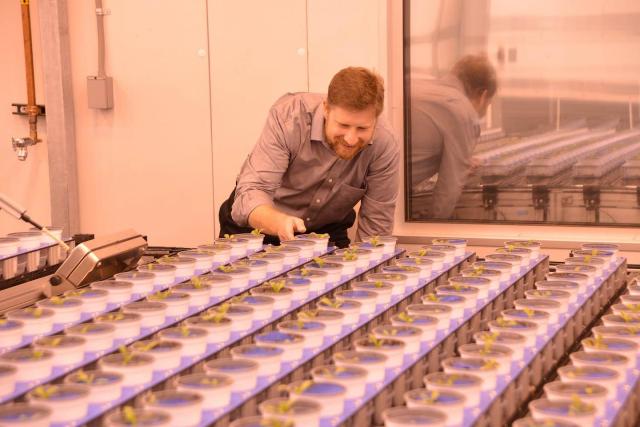Jun 22 2015
The Donald Danforth Plant Science Center announced today it was awarded an $8 million grant from the U.S. Department of Energy ARPA-E TERRA program. Funds will be used for research to accelerate breeding and the commercial release of economically viable bioenergy sorghum hybrids. Todd Mockler, Ph.D., Geraldine and Robert Virgil Distinguished Investigator at the Danforth Center is the principal investigator of this multi-institutional project.
 This is a new research program to unleash the potential of energy sorghum. Credit:Donald Danforth Plant Science Center
This is a new research program to unleash the potential of energy sorghum. Credit:Donald Danforth Plant Science Center
The USDA has forecast that more than 90 percent of U.S. cellulosic bioenergy needs will be met through biomass production in the South, with sorghum identified as a key crop. The new sorghum bioenergy belt will span east Texas, the Mississippi Valley, the Gulf Coast and the southern Atlantic Coast. Sorghum is a drought and heat tolerant member of the grass family and is grown worldwide. Sorghum's adaptability to diverse environments, low fertilizer requirements, high biomass potential and its compatibility with row crop production positions it to become a premier bioenergy crop in the U.S.
Mockler will lead a team focused on deploying an automated, robust field phenotyping system to deliver baseline crop trait data of unprecedented quality and quantity, and that will accelerate development of high-yielding bioenergy sorghum.
"By understanding the phenotypic and genomic variation of bioenergy sorghum, we will lay the foundations for deploying computationally-enabled breeding strategies that will generate high-yielding sorghum hybrids," said Mockler. "These will be optimized for the U.S. sorghum bioenergy belt, making this crop a leading feedstock source for biofuel production."
Along with its research partners, the Danforth Center will utilize a state-of-the-art, gantry-based plant phenotyping system for high-resolution imaging of entire crop plots grown under field conditions at a University of Arizona research center. The team will also conduct genomic analyses on sorghum and will integrate phenotype and genomic results to create a high-quality reference dataset of energy sorghum's physical characteristics and genomic information.
Precision phenotyping will also be conducted in the Danforth Center's Bellwether Plant Phenotyping Facility. The Mockler team and other Danforth Center scientists have developed advanced software tools, plant image acquisition protocols, data analysis methods and benchmarking tools for high-throughput phenotyping systems. Information gained from the combined controlled-environment and field phenotyping systems will lead to rapid advancements in high-yielding energy sorghum. The project will provide a comprehensive set of phenotypic trait and genetic data in standard community-defined formats that will be made available to researchers through a high-performance computing environment.
These innovations will advance the effectiveness and speed of sorghum breeding programs and production, and add next-generation feedstocks with more favorable greenhouse gas emission profiles to our total energy supply. Although the systems developed will initially be used to improve energy sorghum, they will be directly extendable to other significant energy or food security crops.
Partner institutions include Clemson University, the HudsonAlpha Institute for Biotechnology, Kansas State University, Texas A&M University, the University of Arizona, the University of Illinois, and Washington University in St. Louis, with key collaborators at the National Center for Supercomputing Applications and the U.S. Arid Land Agricultural Research Center of the USDA-Agricultural Research Service.